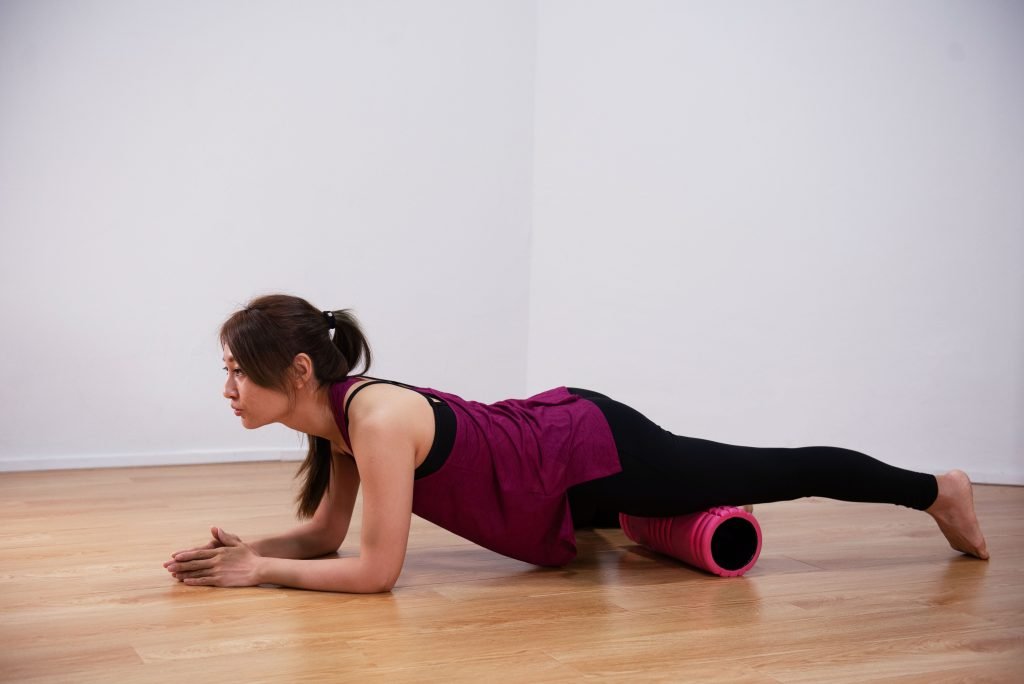The six pack and low body fat percentage is often popularized as the embodiment of fitness and the “perfect” physique. Some of you may even ask about what body fat percentage do it helps to show the abs. This might even be on your new year’s resolution list, but is it really all that? And then there’s the even bigger question — is it really possible for everyone to achieve and what is perfect body fat level for revealing abs?
The good news is that it’s achievable. The bad news, it isn’t necessarily healthy, and just like all things diet and fitness related, there really is no quick fix.
To lower body fat safely and effectively, it’s important to focus on nutrition, exercise and sleep. There is no one-size-fits-all method and a balanced approach needs to be taken. Genetics, body shape, and build always factor into individual results.

So, what can you do?
You can do as many crunches as there are people in the world, but until you’re in a calorie deficit and lose the layer of fat over your abdominal muscles, the six-pack abs won’t show. This makes a calorie deficit extremely important as reducing body fat is a necessary step to reveal a chiseled midsection.
You could have low body fat but still not able to have a six pack. It could be due to often when you’re in a calorie deficit and lose weight, you also lose muscle. To help maintain muscle mass, it’s important to consume adequate amounts of protein, the building blocks of muscle. Aim for a higher-than-average amount (average is around 0.8g/kg of bodyweight), typically 1.2-1.5g/kg. This allows for preservation of lean muscle mass.
Carbs also cause the body to store extra water. When we eat carbs, the energy that we don’t use right away is stored as glycogen molecules. Each gram of glycogen comes with 3g of water attached. When we decrease carbohydrates, it tends to create an illusion of easy weight loss but actually it’s water that’s being decreased, giving us the visual appeal of a more defined midline.
Lastly, combining cardio — specifically high intensity exercise and resistance training — whilst in a calorie deficit seems to be an effective way to tone the abdominal region of your body. Simple exercises like walking or swimming laps can also be effective in increasing total energy expenditure.
The theory of spot reduction has been promoted in the health and fitness world for some time — this is where you can reduce fat levels on certain body areas by exercising them specifically, however, there’s not much evidence to support it. For instance, as we said before, smashing out the crunches alone isn’t going to give you abs.
Is it healthy to have very low body fat?
Simply put, no. Too little body fat can be harmful and some body fat is good — we actually need it to survive.
This fat can be used to ensure you have sufficient energy reserves to survive and also heat your body. Furthermore, it protects internal organs and joints from injury. We definitely need fat on our body.
Once your body goes ‘out of its comfort zone’ and starts to get to the lower body fat percentages, it tries everything to fight back. It doesn’t like being there and will do everything to defend your most stable weight. This is because your body thinks you are putting it into a starved state and prepares it for the next ‘famine’. This is known as the set point theory.
Women naturally require more fat than men. This is due to the hormone oestrogen, which is necessary to support fertility.
What is oestrogen?
Oestrogen is one of the main female sex hormones. While both sexes produce oestrogen, it plays a bigger role in women’s bodies. Oestrogen is produced by your hormonal (endocrine) system and moves through the bloodstream. In the female body, oestrogen is needed for: puberty, the menstrual cycle, pregnancy, bone strength and maintaining normal cholesterol levels.
Men on the other hand, need less body fat and naturally have more lean muscle tissue, due to testosterone, which helps them drop weight faster.
What is testosterone?
Testosterone is a hormone found in humans. In men, the testicles primarily produce testosterone. Women’s ovaries also make testosterone, though in much smaller amounts. The production of testosterone starts to increase significantly during puberty and begins to dip after age 30 or so. In the male body, testosterone is needed for: sex drive, sperm production, increasing bone and muscle mass, affect the way men store fat in the body and red blood cell production..
A man’s testosterone levels can also affect his mood.
Basic functions of life will start to deteriorate such as concentration, breathing, temperature regulation, menstrual cycle, and energy levels will start to go haywire if essential fats start to fall below 5% for men and 15% in women. Women have high essential body fat ranges as a result of childbearing and reproductive needs.
So, as you can read, having a six pack and a leaner body definitely doesn’t necessarily mean that you’re taking proper care of your body.

Do genetics play a role?
Genetics play an interesting role in body composition, especially when it comes to body fat.
Research suggests that abdominal fat, for example, is inherited. This is due to DNA variants that affect the maintenance and distribution of body fat, as well as body shape.
It’s said that those who carry the FTO gene, may weigh on average 3kg more and are 1.7 times more likely to be obese than those that don’t carry that gene.10 Although there is promising research into the influence that genetics have on our body composition, genetics aren’t keeping you from losing weight. Recent researches suggests that individuals carrying the homozygous FTO gene may lose more weight through diet/lifestyle interventions than noncarriers.
It’s clear that diet has the biggest impact on weight and body composition. Focus on understanding the role that nutrition and exercise play in your fitness goals as opposed to wondering if your weight loss struggles are because of hereditary factors.
Take home message
Revealing your hidden six pack requires a lot of time, effort, dedication and commitment and certainly doesn’t occur overnight. Your body fat percentage, genetics, diet, lifestyle habits and fitness all play a vital role in whether or not that six pack will appear.
Instead, focus your efforts on a well-balanced diet, moving your body daily and getting sufficient amount of quality sleep. We’ve seen that body fat stores that are too low, are not considered healthy and aren’t worth the extreme restriction in our opinion.
Our personal training allows you to meet your lifestyle needs and is flexible to fit into your busy schedule. Feel free to contact us for details.
- Permanently Closed Gyms in Singapore: Complete 2016-2025 List & Why You Need to Choose Wisely - December 29, 2025
- Beyond the Comfort Zone: Embracing the Unknown in Fitness and Life - November 14, 2025
- Why Traditional Gyms Don’t Work (And What Does): The Anti-Gym Revolution - November 14, 2025

6 Responses